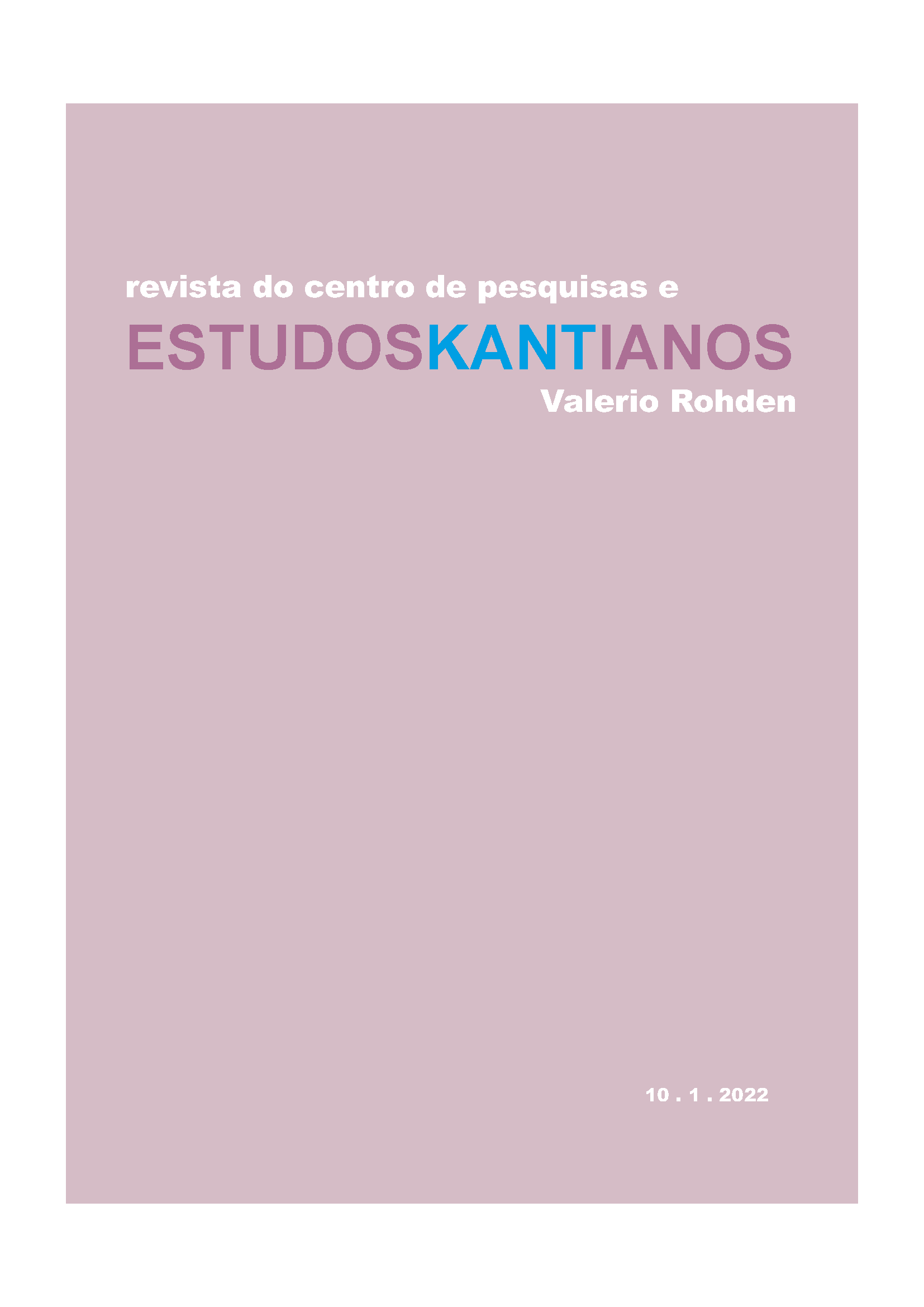The Tension between two Kantian Definitions of the Notion of Concept. The Abstractive Representation and the Function
DOI:
https://doi.org/10.36311/2318-0501.2022.v10n1.p199Palavras-chave:
Kant, Concepts, Abstractive Representations, FunctionsResumo
In the Transcendental Aesthetics, Kant introduces the distinction between intuitions and concepts. Intuitions are immediate and singular representations. Concepts are mediate and universal representations. In the Transcendental Logic, Kant defines the concept as a function or rule. The concept is a rule of unity of the multiplicity of intuition. This investigation aims to show that there is a tension between the definition of concept in the Aesthetics and the Dialectic with the notion of concept as function, according to its presentation in the Transcendental Logic. Our hypothesis is that the definition of concept as a function that is introduced in the Transcendental Logic is grounded on a sui generis notion of concept that comes into tension with the definition of concept as a representation by common marks.
Downloads
Downloads
Publicado
Edição
Seção
Licença
Copyright (c) 2022 Estudos Kantianos [EK]

Este trabalho está licenciado sob uma licença Creative Commons Attribution 4.0 International License.
![Estudos Kantianos [EK]](https://revistas.marilia.unesp.br/public/journals/16/pageHeaderLogoImage_pt_BR.png)



